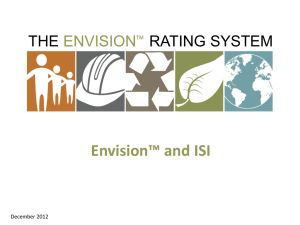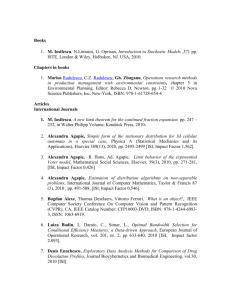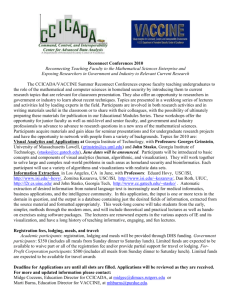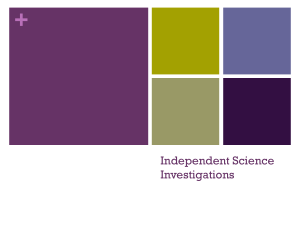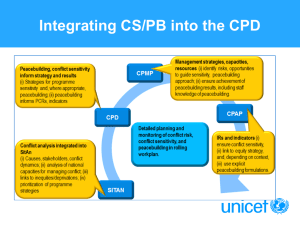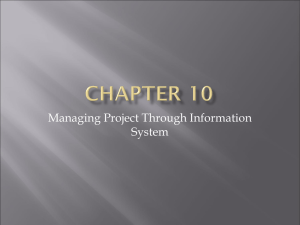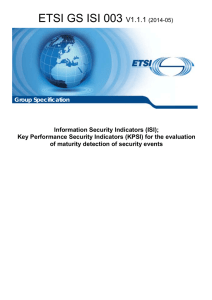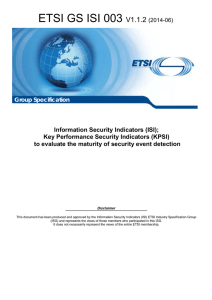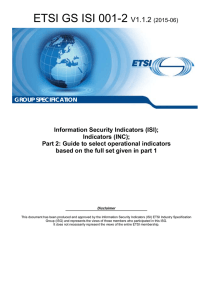Information Security Indicators
advertisement
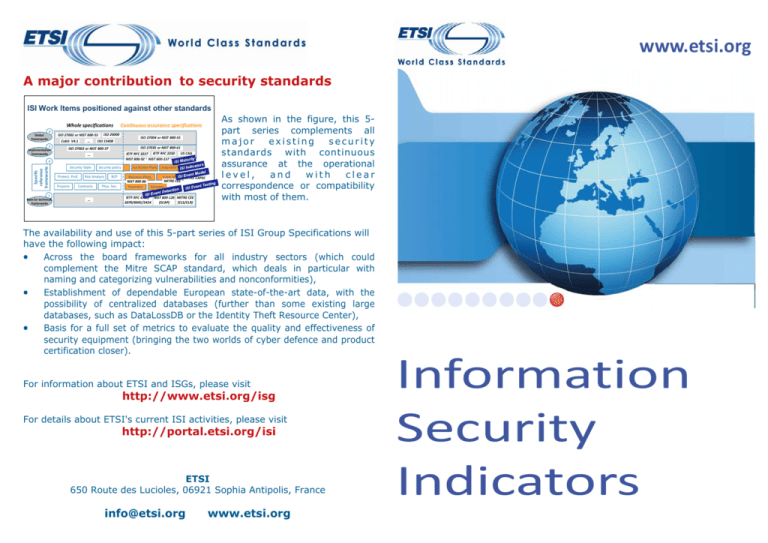
www.etsi.org A major contribution to security standards ISI Work Items positioned against other standards Whole specifications 4 Global frameworks ISO 27002 or NIST 800‐53 Cobit V4.1 3 Implementation frameworks … Continuous assurance specifications ISO 20000 ISO 15408 … Specific reference frameworks 2 1 Base (or technical) frameworks Security Table Protect. Prof. Projects Security policy Risk Analysis Contracts … ISO 27004 or NIST 800‐55 ISO 27035 or NIST 800‐61 IETF RFC 3227 IETF RFC 2350 US CAG NIST 800‐92 NIST 800‐137 ISO 27003 or NIST 800‐37 BCP Phys. Sec. Act Action Plans Indicators Event Model MITRE CAPEC Reaction Plans MITRE CEE NIST 800‐86 Forensics Glossary IETF RFC 4765/ NIST 800‐126 MITRE CEE (SCAP) 5070/6045/5424 (CLS/CLR) As shown in the figure, this 5part series complements all major existing security standards with continuous assurance at the operational level, and with clear correspondence or compatibility with most of them. The availability and use of this 5-part series of ISI Group Specifications will have the following impact: • Across the board frameworks for all industry sectors (which could complement the Mitre SCAP standard, which deals in particular with naming and categorizing vulnerabilities and nonconformities), • Establishment of dependable European state-of-the-art data, with the possibility of centralized databases (further than some existing large databases, such as DataLossDB or the Identity Theft Resource Center), • Basis for a full set of metrics to evaluate the quality and effectiveness of security equipment (bringing the two worlds of cyber defence and product certification closer). For information about ETSI and ISGs, please visit http://www.etsi.org/isg For details about ETSI's current ISI activities, please visit http://portal.etsi.org/isi ETSI 650 Route des Lucioles, 06921 Sophia Antipolis, France info@etsi.org www.etsi.org Information Security Indicators Filling the gap in the Cyber Defence and Security Information and Event Management standardization Today, reference frameworks in the cyber defence and security information and event management (SIEM) fields are often missing or are very poor, thus hindering bench-marking of IT security controls. As a result, we need IT security indicators related to event classification models. ETSI has created an Industry Specification Group for Information Security Indicators (ISG ISI) to address this matter. ISG ISI will overcome real-world difficulties such as standards being too technical, ill-positioned or not well structured, by relying on a strong vision, while at the same time focusing on implementation. It is necessary to find a balance between security governance and technology, in order to gain support from IT and security managers and decision makers. Experience gathering being key in this matter, ETSI ISG ISI (launched during autumn 2011) is based on 4 years of hands-on experience and the frameworks of a European network of grassroots user associations in cyber defence and SIEM from France, UK and Germany. Objectives of ISG ISI The objectives o f ISG ISI are to address the full scope of the main missing security event detection issues through 5 new specifications, while being strictly compliant to ISO 2700x IT security standards: • • • • • ISI Indicators (ISI-001-1 and its associated user guide ISI-001-2), a powerful way to assess security measures level of effectiveness through a full set of some 100 indicators, ISI Event Model (ISI-002), a comprehensive security event classification model covering incidents, vulnerabilities and nonconformities (with detailed taxonomy and representation), ISI Maturity (ISI-003), which aims at assessing the maturity level regarding overall event detection through dedicated Key Security Performance Indicators covering technology, people and processes, and to weigh event detection results, ISI Event Detection (ISI-004), will demonstrate through examples how to produce indicators and how to detect the related events with various means and methods, with categories of use cases/ symptoms, ISI Event Testing (ISI-005), proposes a way to produce security events and to test the effectiveness of existing detection means. The strength of these Group Specifications (GSs) lies in the fact that the first two are already in use in about 50 large companies or organizations world-wide and have proven their effectiveness in several aspects: • • • Real events Bringing new information to decide the best trade-offs between IT security prevention and security event detection and response. Dedicated to security operational indicators, Group Specifications ISI-001-1 and ISI001-2 provide a set of measurements to provide management with a reasonable level of confidence regarding the continuous assessment of an organization’s security settings. Closely related to these two specifications, GS ISI-002 provides a full taxonomy to thoroughly describe all IT security events (and also some non-IT security events) and presents an original classification model that leverages current international best practices and allows for a range of diversified and powerful uses. There are clear connections with risk assessment method classifications, with operational risk models or classifications (such as Cobit or Basel 3), with continuous checking (based on such reference frameworks as SANS CAG Consensus Audit Guidelines), with reference frameworks for reaction plans, and of course with security indicators in general. The taxonomy (especially the “what” and “how” aspects) is strongly related to GS ISI-005 on event detection testing. • • Event detection measures operations) Role of the 5 ISI specifications Event reaction measures Fake events (Simulation) Reconciling top-down (security governance) and bottom-up (IT ground approaches, through clear event detection objectives, These contributions are decisive stepping stones towards a truly professional and more mature “Dynamic IT security”, beyond Risk management and Information Security Management Systems. Address the full scope of main missing security event detection issues Security prevention measures Providing a far more accurate knowledge of both threats and vulnerabilities through detailed state-of-the-art data regarding the main types of security events (Building up future advanced threat intelligence), Detected events Residual risk (event modelcentric vision) • ISI-003 GS builds a dedicated maturity scale, based on hands-on experience and relying on some of the US CAG reference framework critical controls. This is another missing piece in overall event detection. The level of maturity in this area is among the weakest in the IT security. It complements ISI-005 (which is more in-depth and more focused on a case-by-case approach). ISI-004 GS is the “engineering” part of the series, and presents a comprehensive classification of the main symptoms/use cases to be sought after in system traces in order to reveal stealthy incidents. The goal is also to demonstrate some powerful means and methods of detection through examples of frequent security events. ISI-005 GS is the key for credibility and return on investment as it dramatically improves event detection rates which are currently very low for so many types of events. Being able to rely on precise testing scenarios for a typical set of security events is therefore of utmost importance to measure the performance of systems and tools.
